Abstract
Children aged 4.5, 7, or 11 years received an experimental session in which a contingency was placed on button-press duration. Each discrete trial was followed by a brief verbal probe asking a question about the contingency requirement. Other groups of children received an identical task followed by a postexperimental interview. Level of adaptation to the duration contingency tended to increase with age in subjects receiving posttrial verbal probes, but not for those who were interviewed. Eleven-year-olds in the verbal probe condition showed a strong correlation between accurate temporal differentiation and number of verbalizations relating to response duration or timing. The younger subjects, with one exception, showed no association between timing-related verbalizations (which were almost totally absent) and response duration differentiation. This developmental difference occurred even though the younger subjects verbalized after almost every trial. The results suggest that although 11-year-old children apparently produce rule-governed behavior under verbal control as adults do, the behavior of younger children may be controlled directly by reinforcement contingencies even when their verbal repertoires are highly developed.
Full text
PDF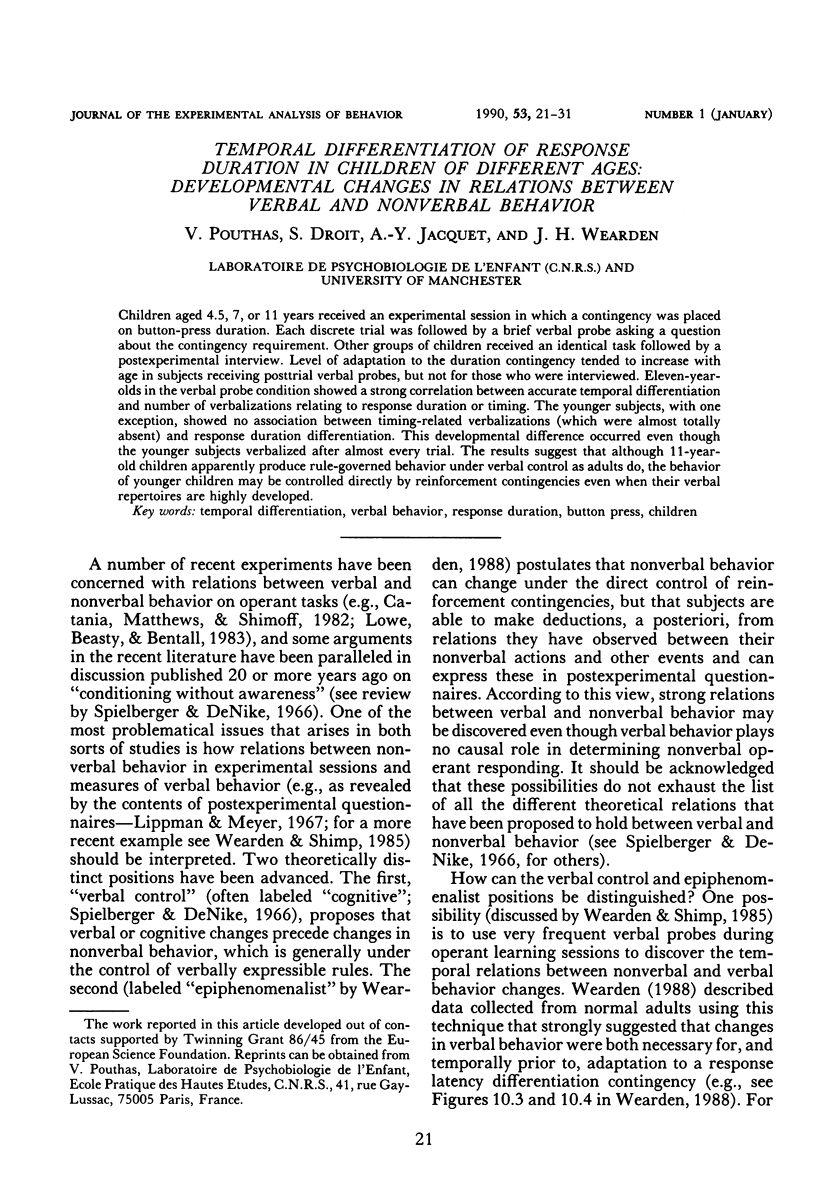
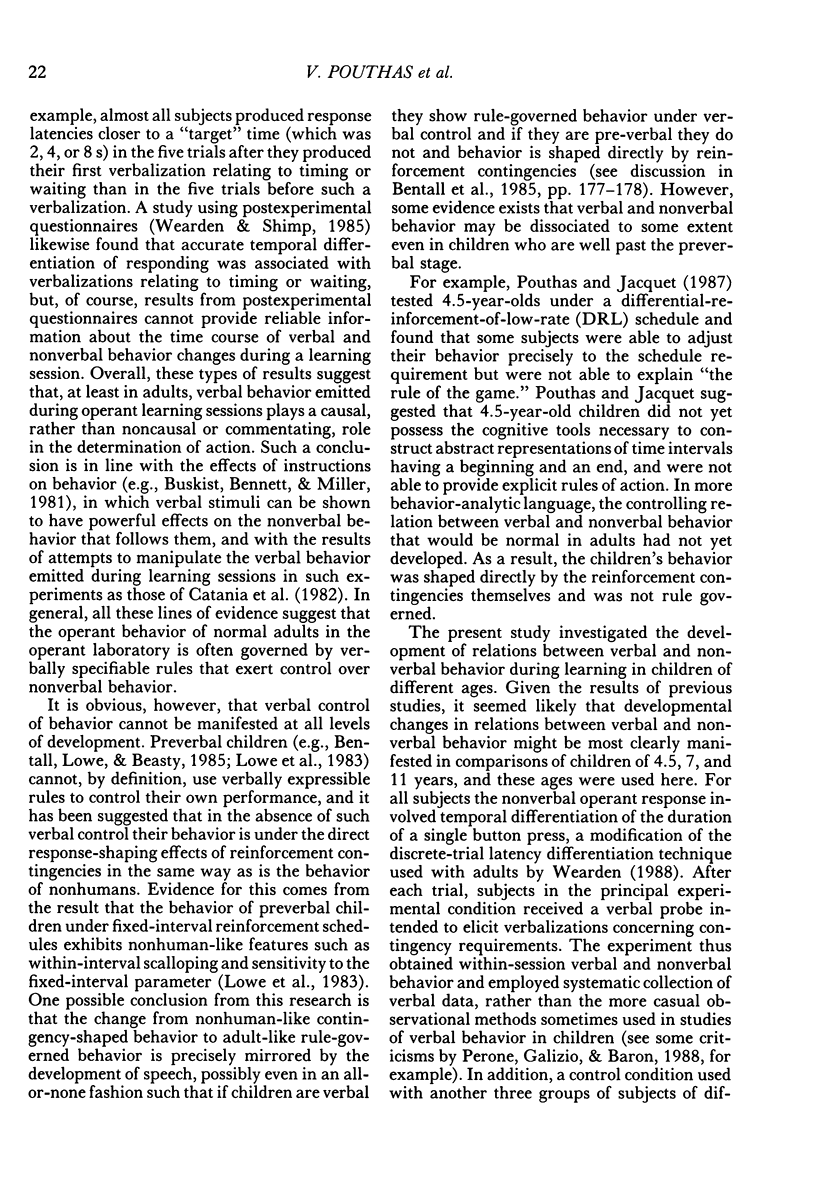
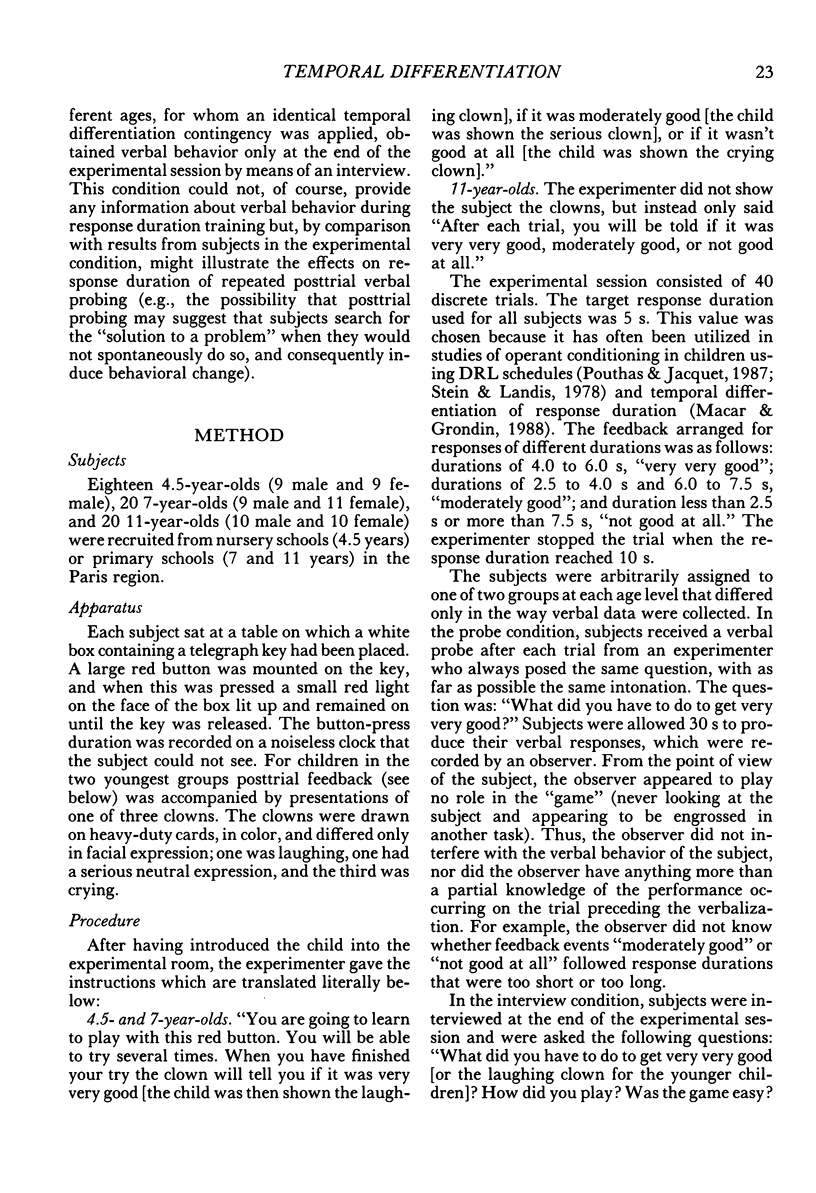
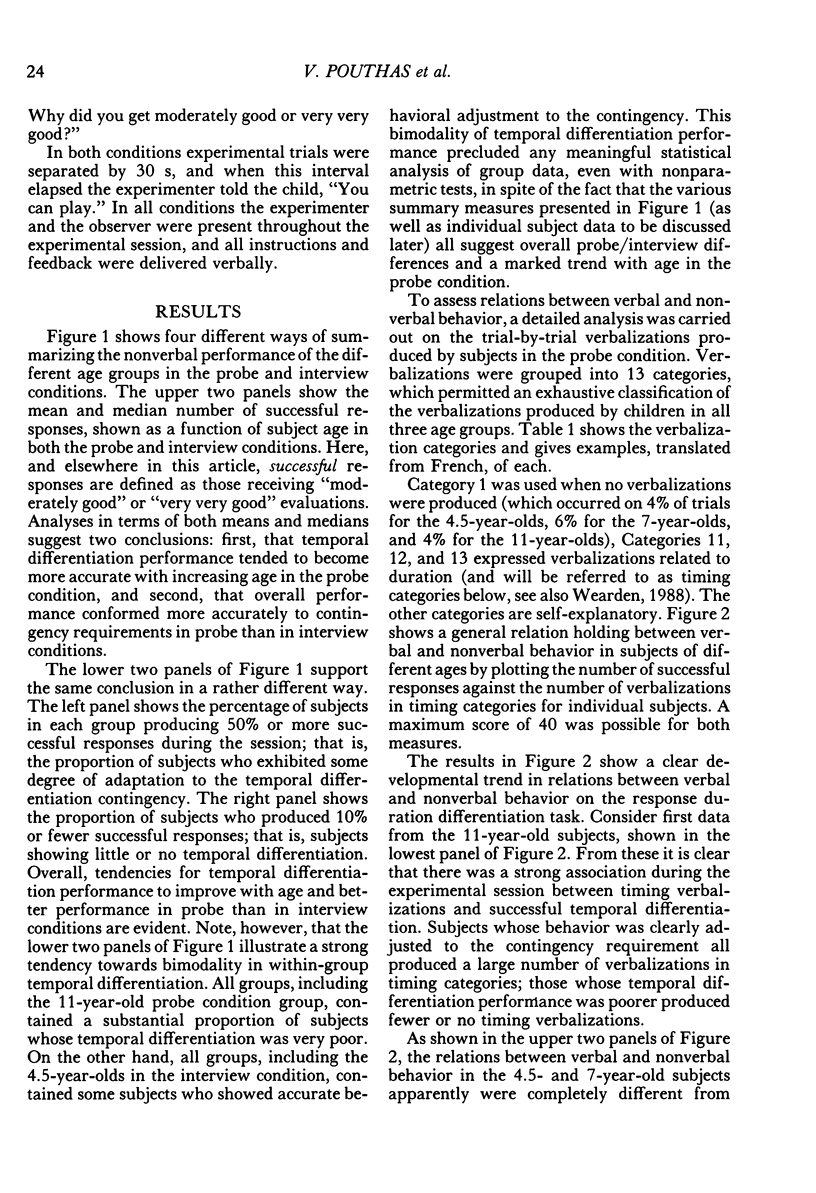
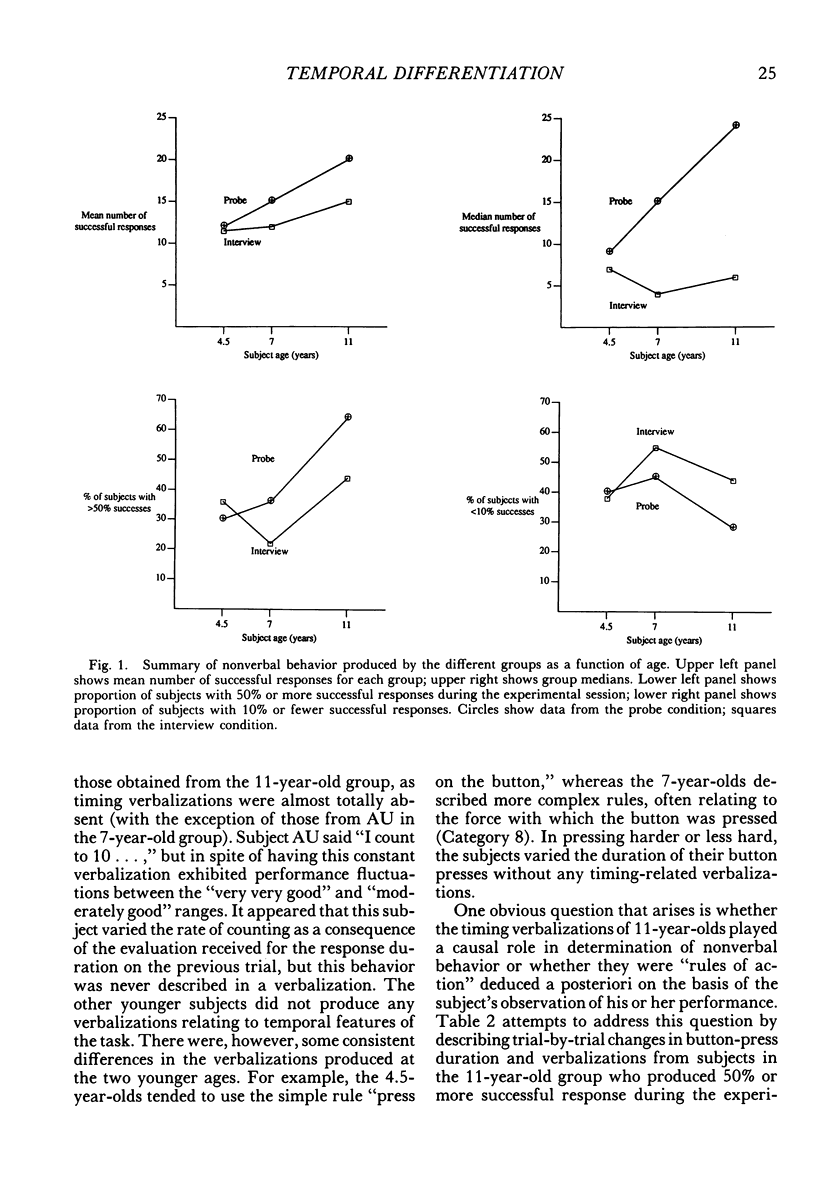
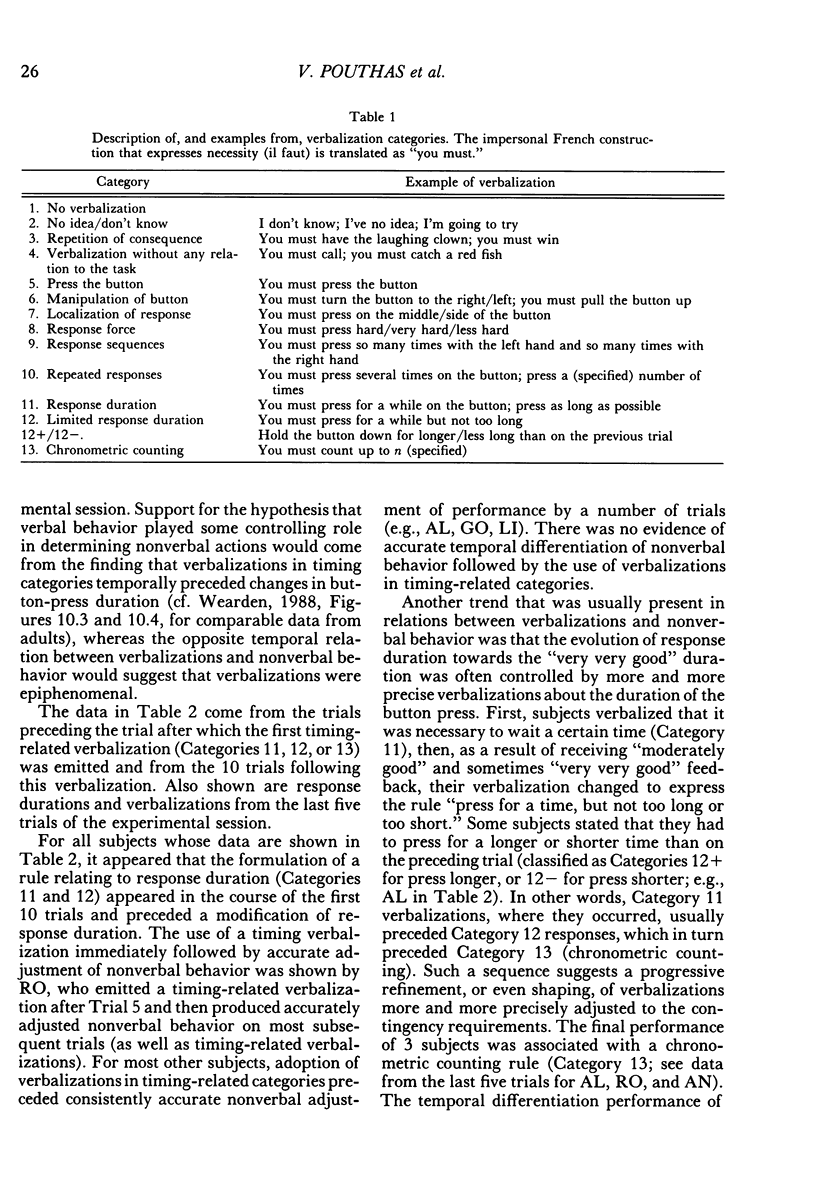
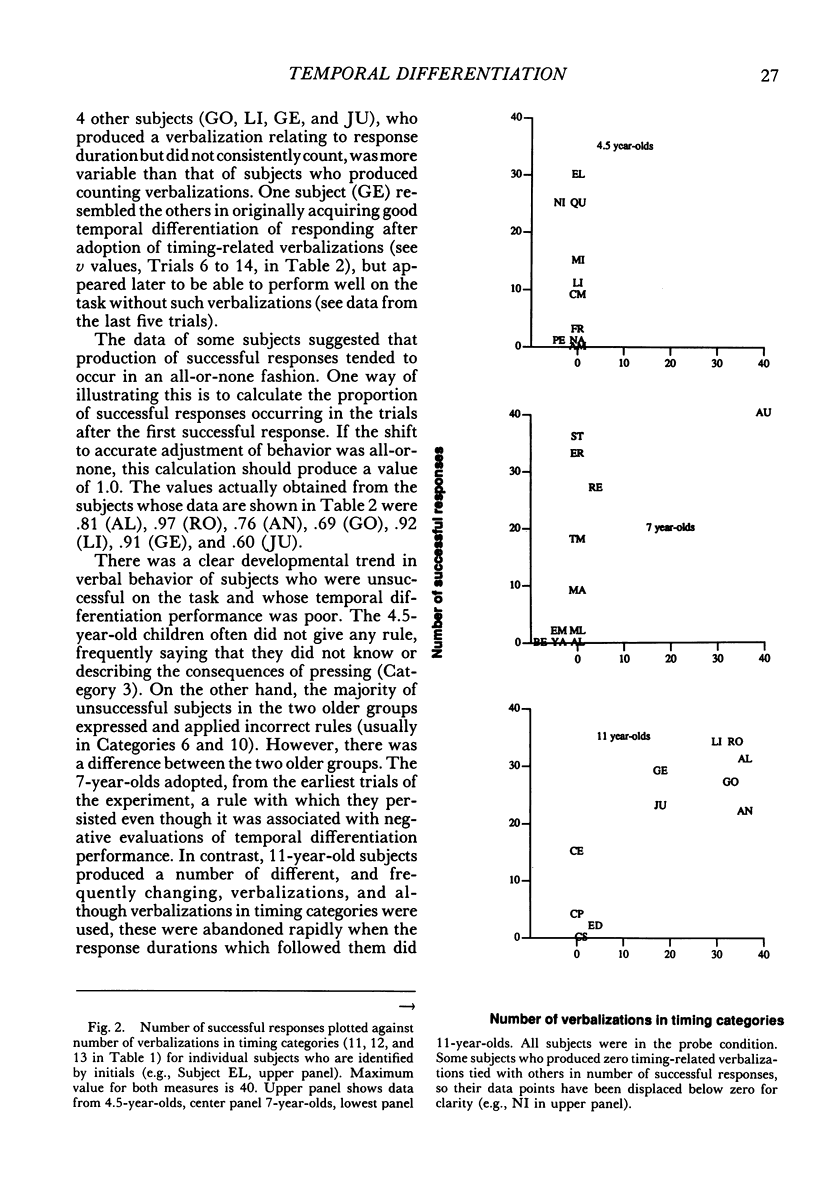
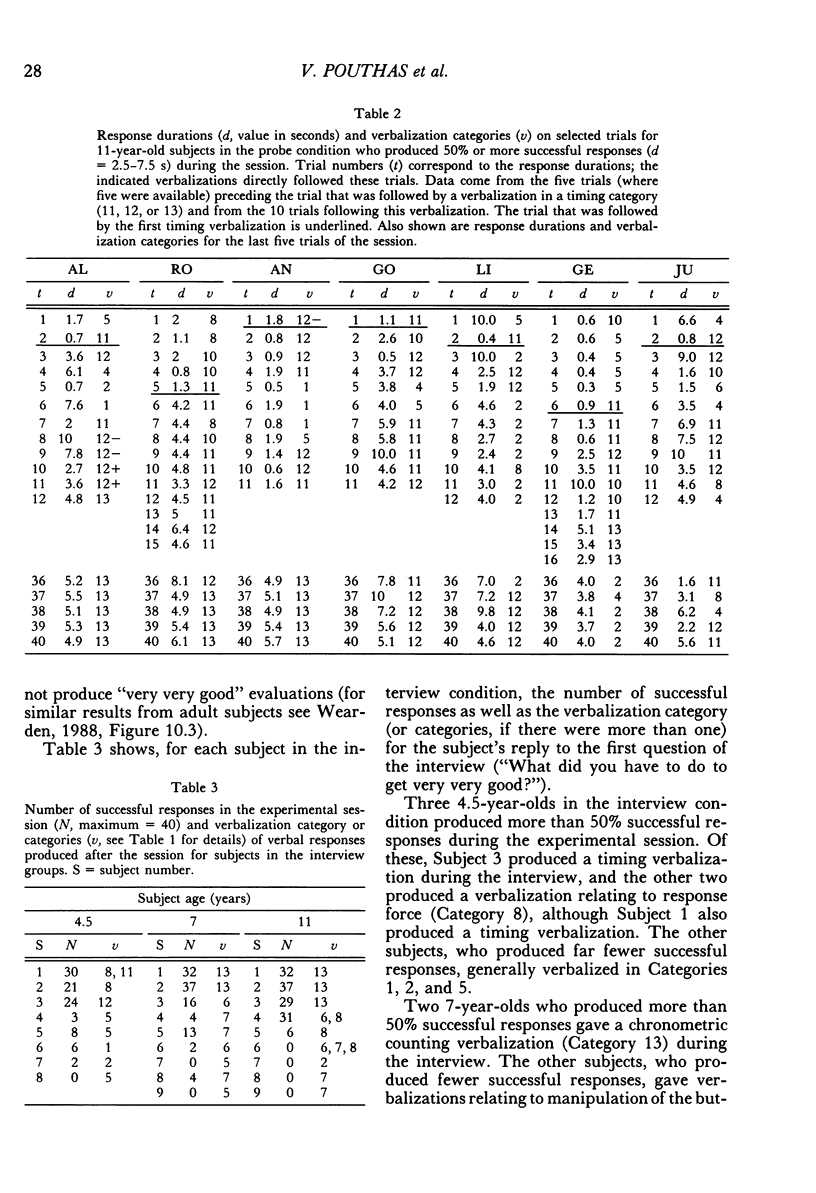
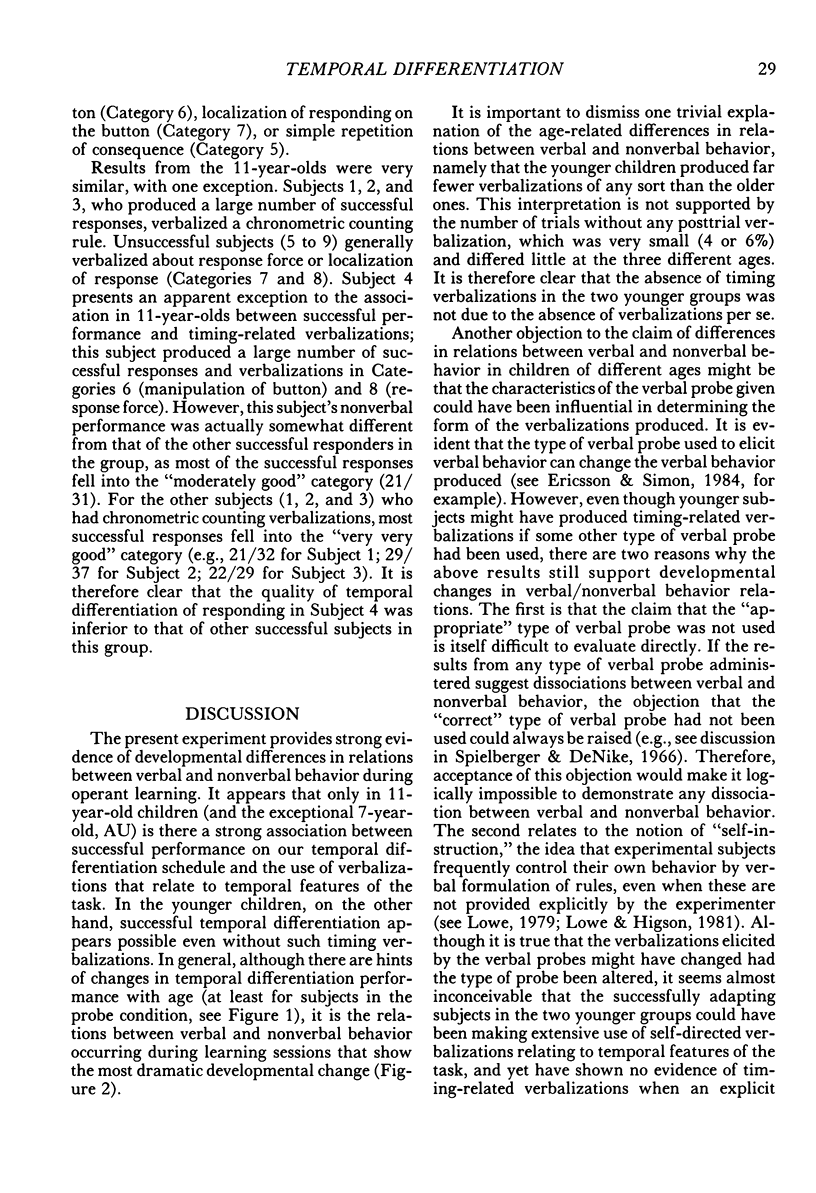
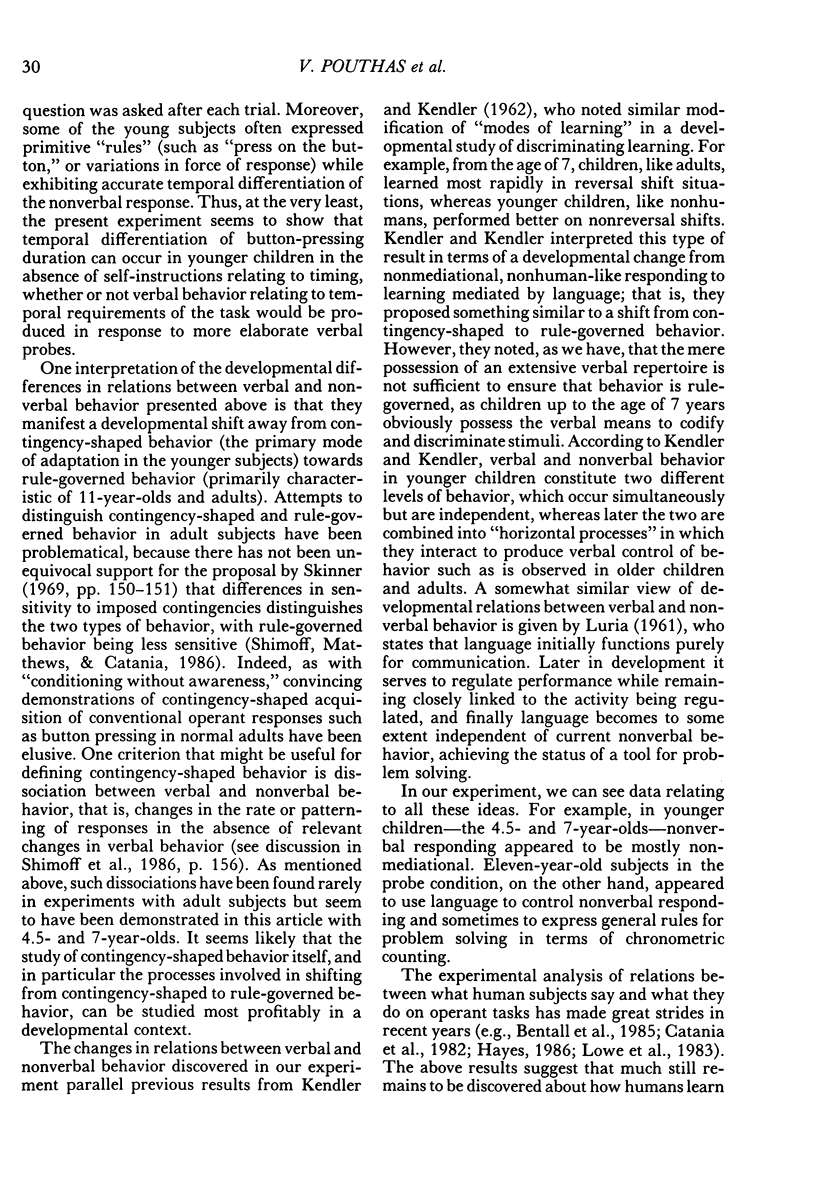
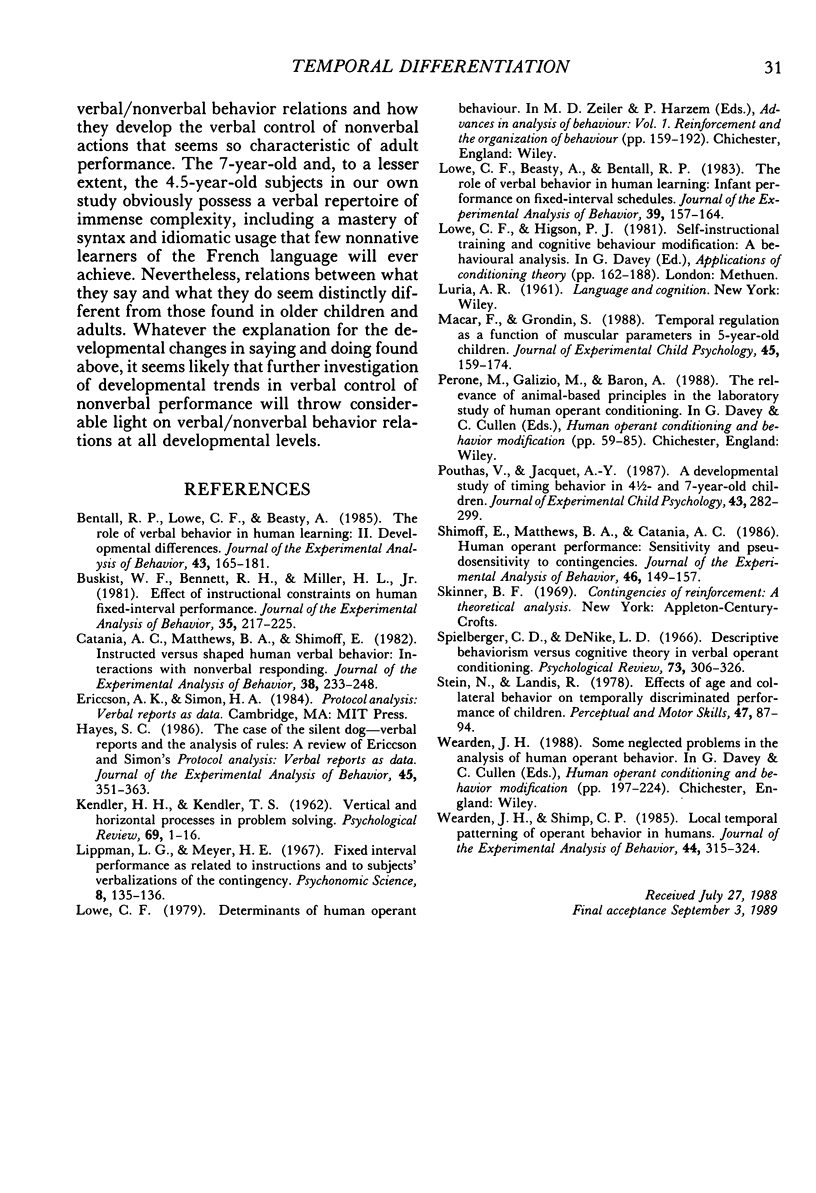
Selected References
These references are in PubMed. This may not be the complete list of references from this article.
- Bentall R. P., Lowe C. F., Beasty A. The role of verbal behavior in human learning: II. Developmental differences. J Exp Anal Behav. 1985 Mar;43(2):165–181. doi: 10.1901/jeab.1985.43-165. [DOI] [PMC free article] [PubMed] [Google Scholar]
- Buskist W. F., Bennett R. H., Miller H. L. Effects of instructional constraints on human fixed-interval performance. J Exp Anal Behav. 1981 Mar;35(2):217–225. doi: 10.1901/jeab.1981.35-217. [DOI] [PMC free article] [PubMed] [Google Scholar]
- Catania A. C., Matthews B. A., Shimoff E. Instructed versus shaped human verbal behavior: Interactions with nonverbal responding. J Exp Anal Behav. 1982 Nov;38(3):233–248. doi: 10.1901/jeab.1982.38-233. [DOI] [PMC free article] [PubMed] [Google Scholar]
- KENDLER H. H., KENDLER T. S. Vertical and horizontal processes in problem solving. Psychol Rev. 1962 Jan;69:1–16. doi: 10.1037/h0038537. [DOI] [PubMed] [Google Scholar]
- Lowe C. F., Beasty A., Bentall R. P. The role of verbal behavior in human learning: infant performance on fixed-interval schedules. J Exp Anal Behav. 1983 Jan;39(1):157–164. doi: 10.1901/jeab.1983.39-157. [DOI] [PMC free article] [PubMed] [Google Scholar]
- doi: 10.1901/jeab.1986.45-351. [DOI] [PMC free article] [Google Scholar]
- Pouthas V., Jacquet A. Y. A developmental study of timing behavior in 4 1/2- and 7-year-old children. J Exp Child Psychol. 1987 Apr;43(2):282–299. doi: 10.1016/0022-0965(87)90064-6. [DOI] [PubMed] [Google Scholar]
- Shimoff E., Matthews B. A., Catania A. C. Human operant performance: Sensitivity and pseudosensitivity to contingencies. J Exp Anal Behav. 1986 Sep;46(2):149–157. doi: 10.1901/jeab.1986.46-149. [DOI] [PMC free article] [PubMed] [Google Scholar]
- Spielberger C. D., DeNike L. D. Descriptive behaviorism versus cognitive theory in verbal operant conditioning. Psychol Rev. 1966 Jul;73(4):306–326. doi: 10.1037/h0023454. [DOI] [PubMed] [Google Scholar]
- Wearden J. H., Shimp C. P. Local temporal pattering of operant behavior in humans. J Exp Anal Behav. 1985 Nov;44(3):315–324. doi: 10.1901/jeab.1985.44-315. [DOI] [PMC free article] [PubMed] [Google Scholar]


